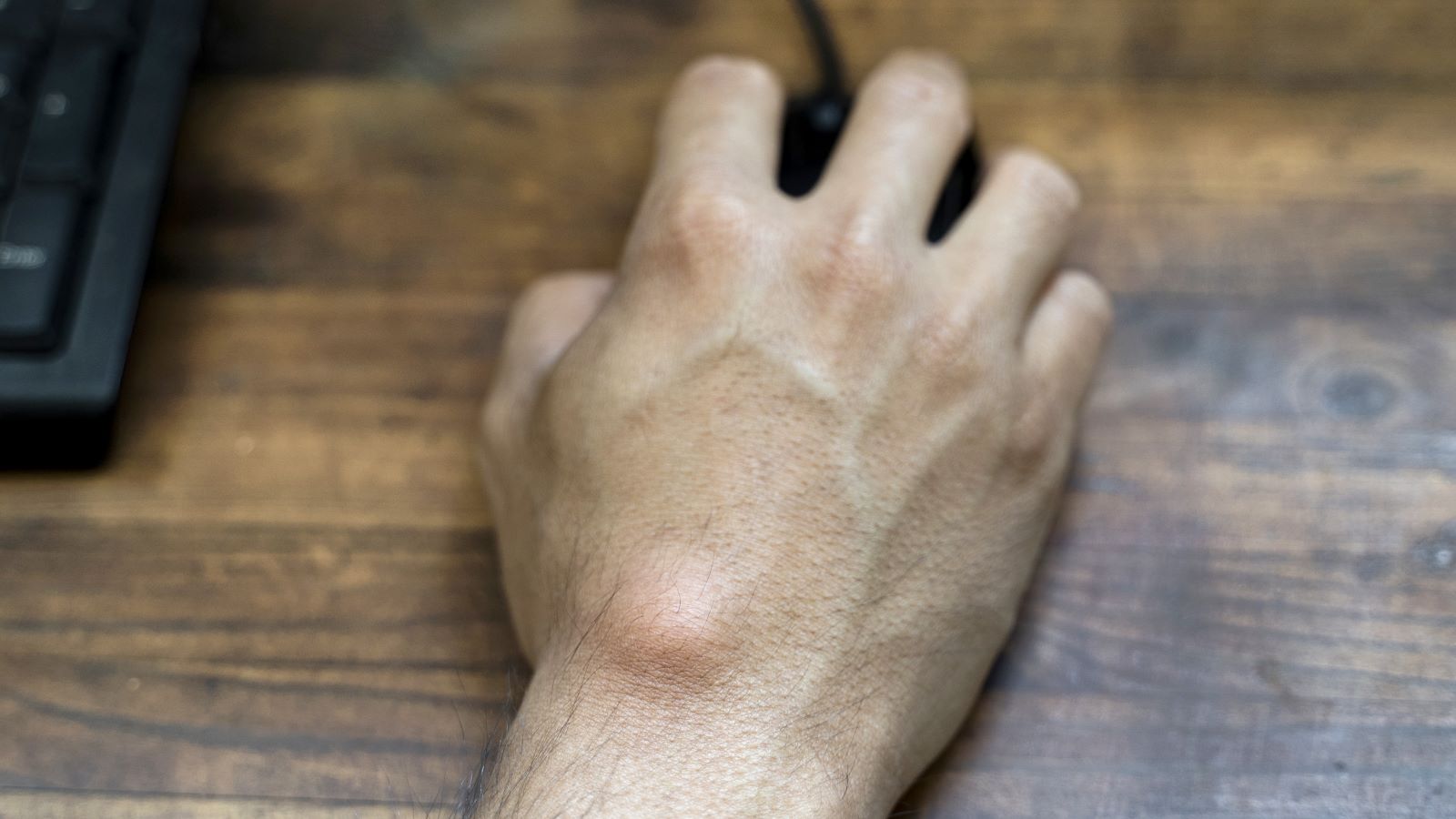<< Back
Should I Pop My Ganglion Cyst?

September 19, 2025
Ganglion cysts are common — firm, round bumps that show up on your wrist or hand. And when they show up, you may be tempted to try and pop them.
But spoiler alert — it’s not a good idea. Here’s what you need to know.
What is a ganglion cyst?
“A ganglion cyst is a fluid-filled mass that can form around joints or tendons,” says Erin Cravez, MD, orthopedic surgeon and hand specialist at Hartford HealthCare’s Connecticut Orthopaedic Institute. “They’re benign — not cancerous — and filled with a jelly-like fluid that normally lubricates your joints or tendons.”
Ganglion cysts are most common on the back of the wrist, followed by the front, but can develop around almost any joint or tendon. Sometimes they form after an injury, sometimes from overuse, and sometimes without a clear cause.
“They may grow with overuse and shrink with rest,” Dr. Cravez notes.
> Related: 4 Common Causes of Hand Injuries
Why you should think twice before popping one.
For many, ganglion cysts are only a cosmetic concern. But some people — especially early on or when the cyst is small — feel a sensation of “fluid under pressure,” particularly during activities like push-ups.
“Historically, providers used to counsel patients to ‘smack it with a Bible,’” Dr. Cravez says. “While they can rupture under pressure — even accidentally — they often come back. In fact, about 75% return after rupture.”
And treating one at home can carry even more risks than recurrence.
“Draining one at home without a sterile environment can lead to serious infections.”
When to see a doctor.
It’s generally safe to watch a ganglion cyst if it isn’t painful or affects your activities.
But seek evaluation from a hand specialist if:
- The cyst grows quickly
- There’s redness or itching
- It exceeds 2 cm in diameter
“These changes can signal that it’s not a simple cyst and needs to be checked,” Dr. Cravez says.
Your doctor can offer treatment options.
The safest option is often doing nothing — especially if the cyst doesn’t hurt. But if you dislike its appearance or feel, there are treatments.
- Draining: Can be done in a clinic, but recurrence is common. “I tell patients it’s like a water balloon attached to a slow faucet,” Dr. Cravez explains. “If I poke the balloon, I can remove fluid — but the faucet is still on, and it will refill.”
- Surgical removal: Involves excising the entire cyst lining and closing the “stalk” where fluid enters. “This works about 90% of the time,” says Dr. Cravez. “It’s safe, relatively simple, and can often be done awake under local anesthesia.”
Bottom line.
If you want the best shot at getting rid of your cyst for good, skip the Bible-smacking and home draining.
“See a hand surgeon to talk through your options,” Dr. Cravez says. “That way, you’ll know exactly what you’re dealing with — and what approach makes the most sense for you.”